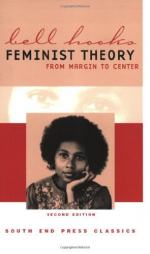
|
| Name: _________________________ | Period: ___________________ |
This quiz consists of 5 multiple choice and 5 short answer questions through Chapters 10 and 11.
Multiple Choice Questions
1. What can the kind of power practiced by women from non-affluent communities enable them to do?
(a) It can enable them to resist exploitation, freeing them to transform society for the better.
(b) It will enable them to keep their jobs.
(c) It enables them to reinforce the patriarchal model of power.
(d) It will not enable them to change anything.
2. How does the author view housework?
(a) As demeaning.
(b) As women's work.
(c) As creative and life-affirming-sometimes more so than work outside the home.
(d) As extremely tiring.
3. What general statement does the author make about men that may seem to contradict her other claims?
(a) Most men are unable to truly support feminism.
(b) Sexism is not perpetuated by educated men.
(c) All men support and perpetuate sexism and sexist oppression in one form or another.
(d) Men are no longer sexist.
4. In the author's view, how should the beliefs about motherhood that she discusses be dealt with?
(a) They should be replaced by non-European beliefs.
(b) They should be broken down and eliminated.
(c) They should be taught in schools.
(d) They should be embraced by new mothers.
5. The author states that most women would like to be like ________________.
(a) their mentors.
(b) their best friends.
(c) white men.
(d) their mothers.
Short Answer Questions
1. In the Preface to the first edition (1984), what general theme does the author present?
2. How did the group initially discussed by the author characterize parenthood?
3. How does the author describe the family in "Western society"?
4. How does the author characterize black women's future role in the feminist movement?
5. What was the author's initial experience in women's groups?
|
This section contains 417 words (approx. 2 pages at 300 words per page) |

|




